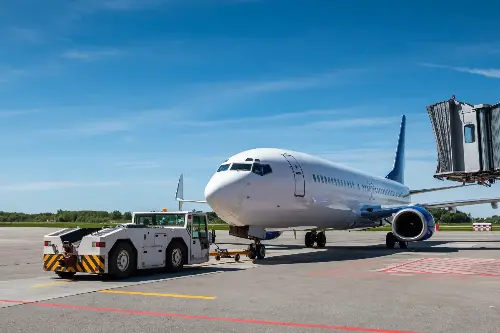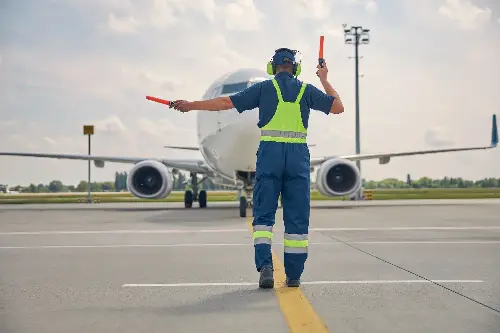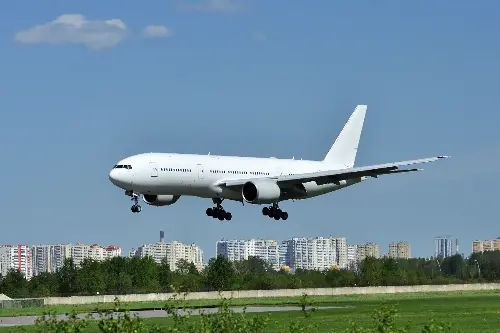When we think of airplanes, we typically envision these magnificent machines soaring gracefully through the skies. Less often do we consider how airplanes manoeuvre on the ground. One question that might tickle the fancy of both avid aviation enthusiasts and curious minds alike is: do airplanes have a reverse gear? Let's dive into the mechanics of aircraft movement and discover some fascinating aspects of how airplanes navigate terra firma.

Aviation Myths Uncovered
Firstly, it's worth noting that airplanes do not have a reverse gear in the conventional sense that cars do. In a car, selecting reverse gear enables the vehicle to move backward under its power. However, the picture is somewhat different for airplanes. They can move backwards, but not by using a "reverse gear". This backward movement is commonly referred to as "pushback" in aviation terms.
Pushback Procedures
Pushback is the process used to move an aircraft away from the airport gate. It is typically carried out by a tug vehicle that physically pushes the plane backward. This is often the first time an aircraft moves under its power when starting a flight, as engines are usually turned on after the pushback to avoid hazards and to save fuel. However, in exceptional cases where tugs are not available, some aircraft can push themselves back using a procedure known as a power-back, but this is not common due to the jet blast it creates, which could cause damage or injury.

Thrust Reversal: A Closer Look
While airplanes don't possess a reverse gear for moving back, they do have a system in place to help slow down during landing—a critical phase of flight. Known as thrust reversers, these ingenious mechanisms divert the engine's thrust to help the aircraft decelerate once it has touched down on the runway. In essence, they temporary redirect engine exhaust forward to help slow down the aircraft. While this system is employed in the air, it functions more as a speed reducer rather than a means to truly reverse.
Ground Operations: Turning and Taxiing
Let's explore how airplanes handle turns and taxiing on the ground. Aircraft utilise their main landing gear to execute turns. While the nose wheel or tail wheel (depending on the aircraft design) can pivot, the main wheels are fixed. Pilots control the steering with the use of the tiller or rudder pedals, which manoeuvre the nose wheel or tail wheel. This allows precise control while taxiing on the runway or airport apron.

Jet Engines and Ground Movement
It would be intriguing to explore if jet engines are involved in any way in ground movement, given they are the powerhouse of an aircraft. Indeed, pilots can use engines to some extent to control the speed while taxiing. However, the use of engines is limited as they are designed primarily for thrust during flight, not for ground navigation. Excessive use of thrust on ground can be hazardous due to the powerful jet blast. Therefore, engines are used cautiously, and the primary control comes from the aircraft's braking system and steering control.
Engineering Marvels: Unique Features
Now, let's talk about some unique features related to the aircraft's ground mobility. Certain long-haul aircraft have a body gear steering system. This system, typically found on the larger airplanes like the Boeing 777, allows the rear set of wheels under the plane's body to turn slightly. This assists in making sharper turns, which is particularly useful when navigating through tighter areas of the airport.

In the Light of Safety
Safety is paramount in aviation, hence why aircraft ground operations are meticulously planned and executed. Airplane maneuvers on the tarmac must accommodate the given space while considering the safety of airport personnel, passengers, and the aircraft itself. All movements are conducted under strict guidance and regulations to ensure the utmost safety.
In summary, while airplanes might lack a 'reverse gear' as we know it, they are by no means stranded once their wheels hit the ground. From pushback procedures and thrust reversers to specialised steering systems, aircraft are equipped with a variety of features that ensure they can navigate both the skies and the airport runway with finesse and precision. These fascinating mechanisms and procedures highlight the intricate planning and engineering behind every aspect of aviation—a true testament to human ingenuity in the realm of transport.
